The Big Picture
Posted on 15 March 2023 by John Mason, BaerbelW, dana1981
As part of our Rebuttal Update Project, this version of The Big Picture article has been updated with more current data in February 2024. You can access the previous version here.
Note: clicking on the images will open a larger version in a separate tab.
It's easy to get bogged down discussing one of the many pieces of evidence behind human-caused global warming, to the extent that we can't see the forest for the trees. Here, we take a step back and see how all of those trees comprise the forest as a whole. Skeptical Science provides extensive resources that examine each individual piece of climate misinformation and rebuts them with hard evidence, so let's make use of these individual pieces to see how they form the big picture.
The Earth is Warming
We know the planet is warming from surface temperature stations and satellites measuring the temperature of the Earth's surface and lower atmosphere. We also have various tools which have measured the warming of the Earth's oceans. Satellites have measured an energy imbalance at the top of the Earth's atmosphere. Glaciers, sea ice, and ice sheets are all receding. Sea levels are rising. Spring is arriving sooner each year. There's simply no doubt - the planet is warming. Everything to do with temperatures is going up. Everything to do with snow and ice is decreasing. Species are migrating polewards and to higher altitudes (Figure 1).
Figure 1: Indicators of a warming world (click for larger image)
Global Warming Continues
And yes, the warming is continuing. The 2010s were warmer than the 2000s, which were hotter than the 1990s, which were hotter than the 1980s, which were hotter than the 1970s. 2023 was the hottest year on record (Figure 2). Temperature datasets are in excellent agreement on this matter. Sea levels are still rising, ice is still receding, spring is still coming earlier and that planetary energy imbalance continues apace.
Figure 2: Four surface-station based estimates of global warming since 1880 (courtesy RealClimate)
Contrary to what the Merchants of Doubt would like us to believe, and they have tried this one more than once, the planet has not magically stopped warming. Those who argue otherwise are confusing short-term noise with long-term global warming (Figure 3).
Figure 3: This version of the Escalator graphic is based on data including the year 2022. The previous versions are still available here with data including 2015 or as a video including 2016. When Robert Rohde updated the escalator and produced a staircase of denial in January 2023, it motivated us to follow suit and to update our escalator with the latest available data as well. (click for a larger version)
El Niño-Southern Oscillation (ENSO)
Foster and Rahmstorf (2011) showed that when we filter out the short-term effects of the sun, volcanoes, and El Niño cycles, the underlying man-made global warming trend becomes even more clear (Figure 4).
Figure 4: Temperature data (with a 12-month running average) before and after the short-term factor removal, from Foster & Rahmstorf (2011).
Although such influences are sources of climate variability, the following plot of ENSO shows that El Nino (warm) and La Nina (cool) years, plus ENSO-neutral years (Figure 5), are all steadily getting warmer: they are simply noise on an upwards trend:
Figure 5: GISTEMP anomalies (with regard to the late 19th Century, colour-coded according to the status of ENSO in the early spring. Reds are El Nino years, blues La Nina and greys neutral. (courtesy RealClimate)
Global energy inventory
For as much as atmospheric temperatures are rising, the amount of energy being absorbed by the planet is even more striking when one looks into the deep oceans and the change in the global heat content (Figure 6).
Figure 6: Global energy inventory, 1971-2018, showing the breakdown of components, as indicated in the legend. Graphic from IPCC AR6 Working Group 1, Box 7.2 fig.1.
Over 90% of global warming goes into heating the oceans. When taking the heating of the entire climate system into account, the planet has warmed at a rate equivalent to 4 Hiroshima atomic bomb detonations per second over the past 15 years (Figure 7).
Figure 7 - Heat Widget from 4Hiroshimas
Humans are Increasing Atmospheric Greenhouse Gases
The amount of greenhouse gases in the atmosphere - particularly carbon dioxide (CO2) - has been rising steadily over the past 150 years. There are a number of lines of evidence which clearly demonstrate that this increase is due to human activities, primarily burning fossil fuels.
The most direct of evidence involves simple accounting. Humans are currently emitting approximately 44 billion tons of CO2 per year. That CO2 doesn't simply vanish. Half of it stays in the atmosphere, while the other half is absorbed by the oceans (which is causing another major problem - ocean acidification).
We also know the atmospheric increase is from burning fossil fuels because of the isotopic signature of the carbon in the atmosphere. Carbon comes in three different isotopes, and plants have a preference for the lightest one, carbon 12. Anything that eats plants, or eats things that eat plants, inherits that light carbon signature. So do the colossal tonnages of geological deposits made from ancient life - in other words the fossil fuels. So if the fraction of carbon 12 in the atmosphere is increasing, which it is, we know the increase is due to burning fossil fuels.
The fact that humans are responsible for the increase in atmospheric CO2 is settled science. The evidence is clear-cut.
Human Greenhouse Gases are Causing Global Warming
There is overwhelming evidence that humans are the dominant cause of the recent global warming, mainly due to our greenhouse gas emissions. Based on fundamental physics and math, we can quantify the amount of warming human activity is causing, and verify that we're responsible for essentially all of the global warming over the past 3 decades. The aforementioned Foster and Rahmstorf (2011) found a 0.16°C per decade warming trend since 1979 after filtering out the short-term noise.
In fact we expect human greenhouse gas emissions to cause more warming than we've thus far seen, due to the thermal inertia of the oceans (the time it takes to heat them). Human aerosol emissions are also offsetting a significant amount of the warming by causing global dimming. Huber and Knutti (2011) found that human greenhouse gas emissions have caused 66% more global warming than has been observed since the 1950s, because the cooling effect of human aerosol emissions have offset about 44% of that warming. Figure 8 shows a more recent assessment (from IPCC AR6) of the components of the overall temperature forcing.
Figure 8: Contributions of individual forcing agents to the total change in the decadal average temperature for the period 1971-2018. Graphic from IPCC AR6 Working Group 1, Box 7.2 fig.1 panel (e). LH scale is energy change in ZJ. Click image to see the full graphic.
Fingerprints in the climate system
There are also numerous 'fingerprints' which we would expect to see from an increased greenhouse effect (i.e. more warming at night, at higher latitudes, upper atmosphere cooling) that we have indeed observed (Figure 9).
Figure 9: Observed 'fingperprints' of man-made global warming (described here and here).
Climate models have projected the ensuing global warming to a high level of accuracy, verifying that we have a good understanding of the fundamental physics behind climate change.
Sometimes people ask "what would it take to falsify the man-made global warming theory?". Well, basically it would require that our fundamental understanding of physics be wrong, because that's what the theory is based on. This fundamental physics has been scrutinized through scientific experiments for decades to centuries.
The Warming will Continue
We also know that if we continue to emit large amounts of greenhouse gases, the planet will continue to warm. We know that the climate sensitivity to a doubling of atmospheric CO2 from the pre-industrial level of 280 parts per million by volume (ppmv) to 560 ppmv (at the beginning of 2023 we were at 420 ppmv) will cause 2–4.5°C of warming. And we're headed for 560 ppmv in the mid-to-late 21st century if we continue business-as-usual emissions.
The precise sensitivity of the climate to increasing CO2 is still fairly uncertain: 2–4.5°C is a rather wide range of likely values. However, even if we're lucky and the climate sensitivity is just 2°C for doubled atmospheric CO2, if we continue on our current emissions path, we will commit ourselves to that amount of warming (2°C above pre-industrial levels) within the next 75 years.
The Net Result will be Bad
There will be some positive results of this continued warming. For example, an open Northwest Passage, enhanced growth for some plants and improved agriculture at high latitudes (though this will require use of more fertilizers), etc. However, the negatives will almost certainly outweigh the positives, by a long shot. We're talking decreased biodiversity, water shortages, increasing heat waves (both in frequency and intensity), decreased crop yields due to these impacts, damage to infrastructure, displacement of millions of people, etc. (Figure 10).
Figure 10: Simplified presentation of the five Reasons for Concern burning ember diagrams as assessed in IPCC AR6 Working Group 2 Chapter 16 (adapted from Figure 16.15, Figure FAQ 16.5.1).
Arguments to the contrary are superficial
If there's one theme we've found in studying politically-motivated criticisms of climate science, it's that they're consistently superficial. For example, the criticisms of James Hansen's 1988 global warming projections never go beyond "he was wrong," when in reality it's important to evaluate and learn from such projections and their outcome i.e.what actually happens. Then again, those who argue that "it's the Sun" ignore the fact that we understand the major mechanisms by which the Sun influences the global climate: furthermore we study and monitor them on a continual basis. We know it's not the Sun because the data say so. Finally, those who argue "it's just a natural cycle" can never seem to identify exactly which natural cycle can explain the current warming, nor can they explain how our understanding of the fundamental climate physics is wrong.
There are legitimate unresolved questions
Much ado is made out of the expression "the science is settled." The science is settled in terms of knowing that the planet is warming rapidly, and that humans are the dominant cause.
There are certainly unresolved issues. As noted above, there's a big difference between a 2°C and a 4.5°C warming for a doubling of atmospheric CO2, and it's an important question to resolve, because we need to know how fast the planet will warm in order to know how fast we need to reduce our greenhouse gas emissions. There are significant uncertainties in some feedbacks which play into this question. For example, will clouds act as a net positive feedback (by trapping more heat, causing more warming) or negative feedback (by reflecting more sunlight, causing a cooling effect) as the planet continues to warm? And exactly how much global warming is being offset by human aerosol emissions?
These are the sorts of questions we should be debating, and the issues that many climate scientists are investigating. Unfortunately there is a very vocal contingent of people determined to continue arguing the resolved questions for which the science has already been settled. And when climate scientists are forced to respond to the constant propagation of misinformation on these settled issues, it just detracts from our investigation of the legitimate, unresolved, important questions.
Smart Risk Management Means Taking Action
People are usually very conservative when it comes to risk management. Some of us buy fire insurance for our homes when the risk of a house fire is less than 1%, for example. When it comes to important objects like cars and homes, we would rather be safe than sorry.
But there is arguably no more important object than the global climate. We rely on the climate for our basic requirements, like having enough accessible food and water. Prudent risk management in this case is clear. The scientific evidence discussed above shows indisputably that there is a risk that we are headed towards very harmful climate change. There are uncertainties as to how harmful the consequences will be, but uncertainty is not a valid reason for inaction. There's very high uncertainty whether I'll ever be in a car accident, but it would be foolish of me not to prepare for that possibility by purchasing auto insurance. Moreover, uncertainty cuts both ways, and it's just as likely that the consequences will be worse than we expect as it is that the consequences won't be very bad.
We Can Solve the Problem
The good news is that we have the tools we need to mitigate the risk posed by climate change. A number of plans have been put forth to achieve the necessary greenhouse gas emissions cuts (i.e. here and here and here). We already have all the technology we need.
Opponents often argue that mitigating global warming will hurt the economy, but the opposite is true. Those who argue that reducing emissions will be too expensive ignore the costs of climate change - economic studies have consistently shown that mitigation is several times less costly than trying to adapt to climate change (Figure 11).
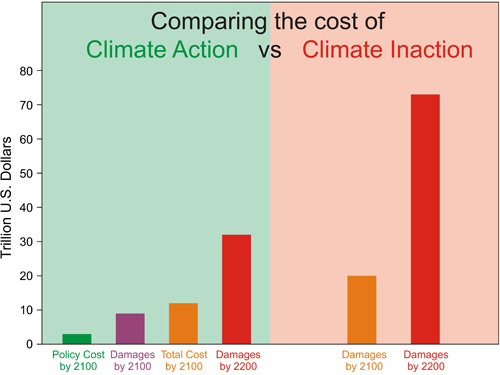
Figure 11: Approximate costs of climate action (green) and inaction (red) in 2100 and 2200. Sources: German Institute for Economic Research and Watkiss et al. 2005
This is why there is a consensus among economists with expertise in climate that we should put a price on carbon emissions (Figure 12).
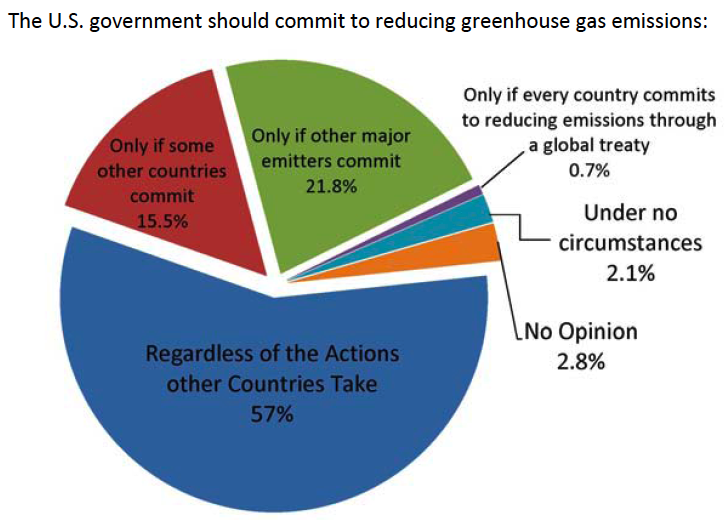
Figure 12: New York University survey results of economists with climate expertise when asked under what circumstances the USA should reduce its emissions (Policy Brief: Economists and Climate Change. Consensus and Open Questions, Holladay et al. 2009)
The Big Picture
The big picture is that we know the planet is warming, humans are causing it, there is a substantial risk to continuing on our current path, but we don't know exactly how large the risk is. However, uncertainty regarding the magnitude of the risk is not an excuse to ignore it. We also know that if we continue on a business-as-usual path, the risk of catastrophic consequences is very high. In fact, the larger the uncertainty, the greater the potential for the exceptionally high risk scenario to become reality. We need to continue to decrease the uncertainty, but it's also critical to acknowledge what we know and what questions have been resolved, and that taking no action is not an option. Th good news is that we know how to solve the problem, and that doing so will minimize the impact not only on the climate, but also on the economy.
The bottom line is that from every perspective - scientific, risk management, economic, etc. - there is no reason not to immeditately take serious action to mitigate climate change. Failing to do so would be exceptionally foolish. Or, as the late Nobel Prize-winning scientist Sherwood Rowland (1927-2012), who made the 1970s discovery that chlorofluorocarbons (CFCs) in our atmosphere cause major damage to Earth's ozone layer, put it many years ago:
"What's the use of having developed a science well enough to make predictions if, in the end, all we're willing to do is stand around and wait for them to come true?"































 Arguments
Arguments






















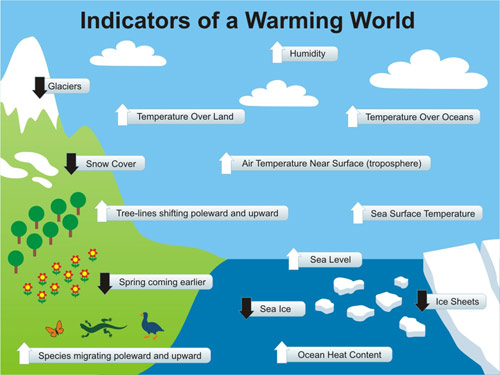
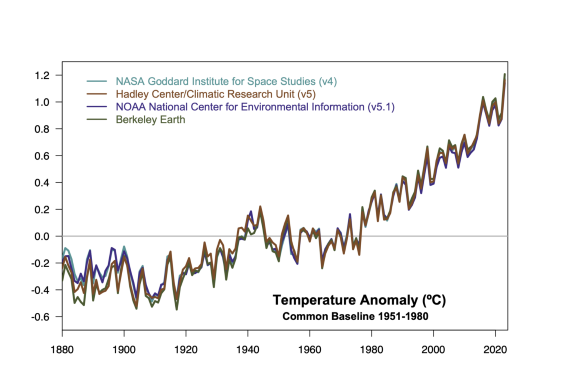
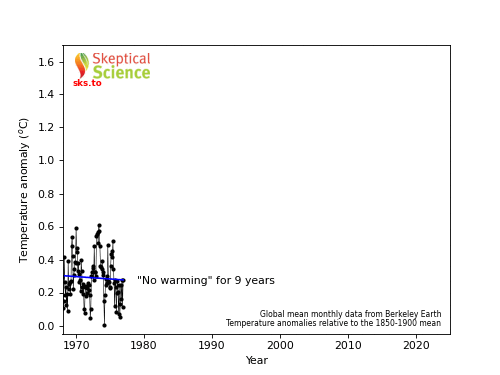
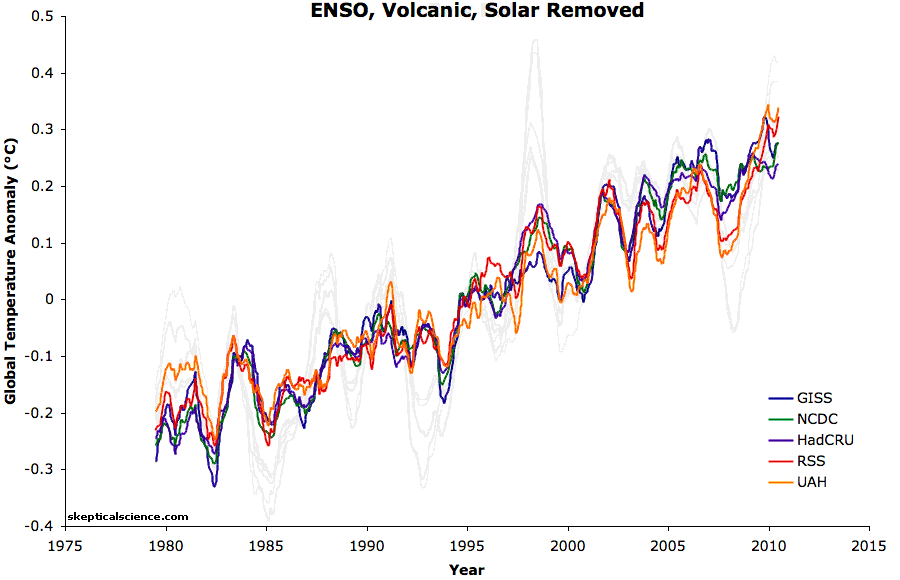
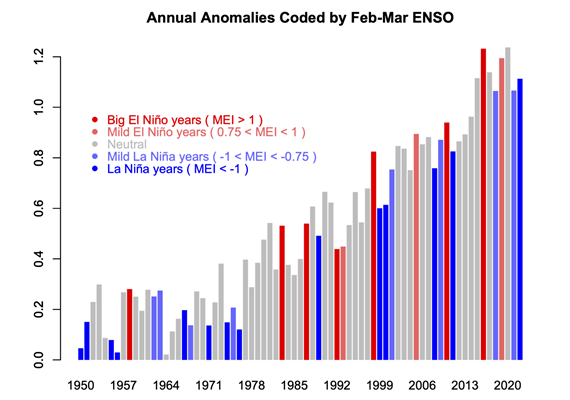
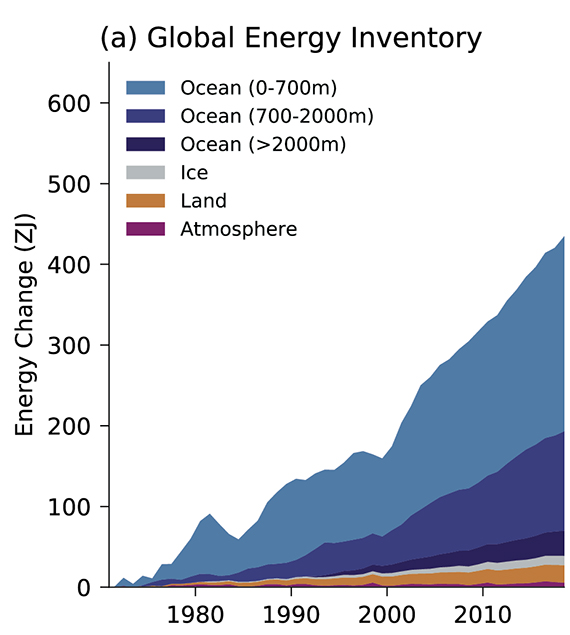
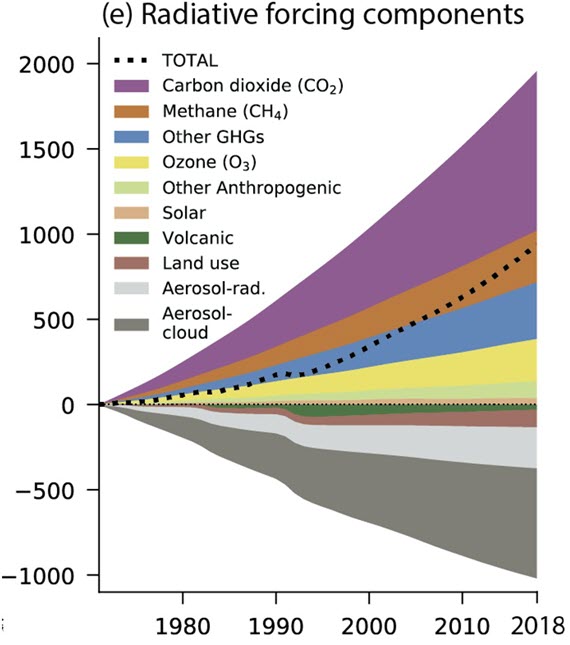
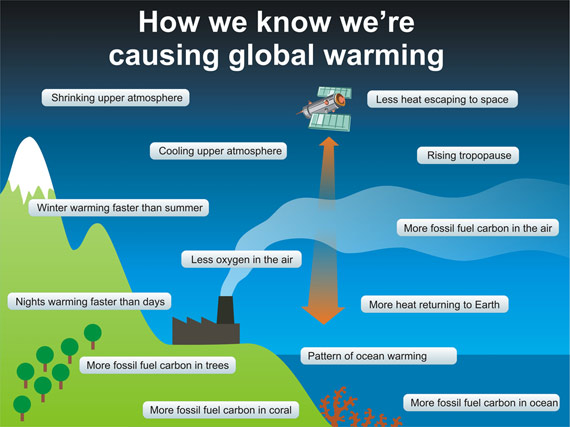
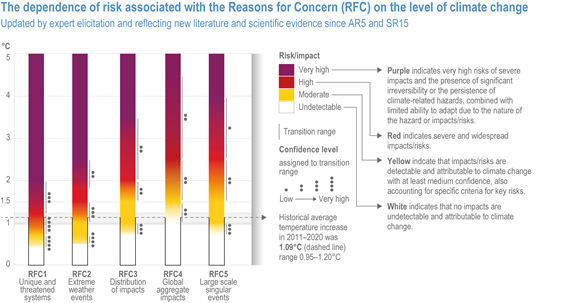









""What's the use of having developed a science well enough to make predictions if, in the end, all we're willing to do is stand around and wait for them to come true?"
>>We haven't developed such science and warming was ALWAYS been associated with flourishing of every life form on earth. Including penguins.
[BL] Such broad sweeping claims on your part with not a shred of evidence to support them does not do your credibility any good.
I also want to declare that my username is consciously mispelled so as to be legible by the dyslectics of the forum (who, I suspect, are the majority in here).
I also added a "been" in the "was always associated" for the same reason (in reality because of a lack of an edit button).
But, Not even an edit button here?
I guess it suits the authors' general mentality of not retracting any of the nonsense they spew.
[BL] I want to declare that you are really off to a bad start here. Before posting again, I strongly suggest that you read the Comment Policy.
Given that the "business-as-usual" case (aka RCP 8.5) has been downgraded to a low likelyhood by the IPCC do the warming estimates here need to be revised ? According to some researchers the new pathway will track more along the lines of RCP 3.4
Gordon @ 3:
No.
The only "warming estimate" for the future that is presented in this blog post is "We know that the climate sensitivity to a doubling of atmospheric CO2 from the pre-industrial level of 280 parts per million by volume (ppmv) to 560 ppmv (at the beginning of 2023 we are at 420 ppmv) will cause 2–4.5°C of warming."
There is no time frame in that estimate. It refers to an unspecified future time where CO2 has doubled. It does not say when it expects us to reach that CO2 level - or even assess a probability that we will.
Scenarios such as RCP8.5 generate an expected timing of the rise of CO2 and other greenhouse gases, and you need to apply a climate model to those atmospheric composition scenarios to get an estimate of temperature rise over the period of the scenario. This blog post does not do that.
And the estimates of 2-4.5°C of warming for doubling of CO2 are largely unaffected by the temporal pathway to reach 2xCO2.
The only other use of the term "estimate" in the blog post is to do with historical values of global temperature, based on observations. Different groups use different analysis methods to "estimate" the global temperature trends, using measurements. This is not dependent on any of the climate models that are used to "estimate" future climates.
So, unless you are thinking of some other "warming estimate" that is not actually presented here...
Is the rebuttal project the best home for this article? It lacks the tight focus of other topics, and its length and graphyness limit its persuasive power.
Even so it gives us just the view from the IPCC's window, which doesn't quite fulfill the title's promise. The big picture is 8 billion people are emitting more CO2 for all sorts of good reasons and are set to emit a great deal more. An institutional consensus has formed that higher CO2 will cause higher temperatures, and those claiming to be following the science cite a variety of evidence consistent with that view. They advocate sweeping changes to global power generation and every other aspect of society but face resistance from developing countries, dissident scientists, distrustful conservatives, consumers, and other factions.
JasonChen @5... Where do you come to the conclusion that any of this is based on "[an] institutional consensus has formed that higher CO2 will cause higher temperatures"?
That higher levels of CO2 will cause the planet to warm is just basic physics. The scientific consensus is merely the result of a high level of confidence in that physics.
Rob @6... Institutional consensus seems pretty overt, no? The UN. Every university. Every government. Every corporation, including big oil. Every mainstream news outlet. The Federal Reserve. The NFL. Leonardo DiCaprio.
Jason @7... That the majority of "institutions" accept fundamental physics is not a bad thing.
From your post @5 it sounded to me as if you were saying "institutions" were informing the science rather than the other way around.
The institutions are the forest, James Hansen a single branch on one tree. To decribe the big picture, one must stay zoomed out.
Does the science inform the institutions or vice-versa? It's hard to reason about such a metaphysical construction as "the science." Among us mortals and our institutions, influence flows in many directions.
Seems to me language like "accepting fundamental physics" makes it hard to do justice to the big picture, for the same reason a fundamentalist Christian perspective makes it hard to paint the big picture of religion.
The big picture is the overwhelming body of science. Institutions, whether or not they agree with the body of science, are functionally irrelevant. Right there your forest and branches metaphor breaks down.
"It's hard to reason about such a metaphysical construction as 'the science.'" Sorry, science isn't a metaphysical construction. It's physics, not metaphysics.
"Seems to me language like 'accepting fundamental physics' makes it hard to do justice to the big picture..." Can we just acknowledge here that you reject basic physics? That seems to be where this discussion is headed.
Yeah, I think the big picture is more complicated than received scientific truth which one either accepts or rejects. Which is why I offered the framing I did. Feel free to pen your own version.
JasonChen @11 and prior,
If I understand Rob Honeycutt correctly, he is suggesting that you should discuss the topic in a pragmatic way (rather than metaphysical).
As the good Douglas Adams says, we could expand the conversation to include "Life, the Universe, and Everything" . . . but then the conversation becomes effete & ultimately pointless. And the Big Picture becomes too big to see.
#Being a follower of American political discourse, I note that in the past 8-10 years particularly, many extremist politicians have developed a strong tendency to talk unceasingly during an interview ~ continuous gabble leaving no room for actual transfer of useful information (or the actual answering of questions put to them). It seems to be a type of verbal kaleidoscopic camouflage, intended to avoid addressing any issue of importance.
In discussing science-based topics, we should recognize & resist any attempt to drown the central subject.
Jason #5:
If you look at the previous version of this summary, you should be able to recognise it's several years out of date WRT the observational evidence. The latter's what was updated. That observational evidence continues to be consistent as it illustrates a steady rise in CO2 and a noisy climb in temperature as other natural factors wax and wane.
That atmospheric CO2 acts like a planetary thermostat is such basic science that one can place it alongside e.g. evolution, gravity and plate tectonics. We know all of these things exist and it's the minutiae of them that attract modern research. To go against such basic concepts is to say, "I'm going to ignore all of the evidence collected over the past two centuries, because I can make something else up". Anyone can do that, but it's unlikely to get them very far!
I may perceive the goal of the article differently than you gentlemen. A big picture review should remind us of the context surrounding our day to day conversations. That means pulling up above the canopy to a point of view where we can see the consensus faction and their beliefs alongside the other major factions and their beliefs.
Jason, that last post contradicts itself. If there's a scientific consensus about something, that means people doing the science have long stopped arguing about the core principles. There may be other "factions" outside of science, for example creationists who dispute evolution. But once you look at the evidence, their views are simply opinion, not evidence-based. That is an important distinction. Evidence is not about belief: it's a hard factual record of the physical world that can be deciphered, with varying degrees of difficulty.
JasonChen @14 ,
your comment seems far better suited to politics than science.
If you have a valid point to make, then you should explain it clearly. Otherwise you risk sounding very much like a ChatGTP artificial intelligence generator of prose. (Something I probably wouldn't have considered 12 months ago ! )
I appreciate this summary being addressed again in this way.
My take is that Co2 is rising as measured and it is human caused. You can overlay the increase from 1B to 8B in population over any of these 'hockey puck' graphs and the more people-more emisions conclusions are solid for me.
The origin of the issues makes all the difference, and the premise that folks shy away from the historic population boom being voiced because there is nothing that can really be done about it, is non scientific.
The crisis? Humanity succeeded in mass shelter, food and medicine. Antibiotics in the last 100 years! Infant mortality has dropped from 400 per thousand ( several hundred years ago) to 5.5 per thousand. More are born and huge % more remain living! We suceeded!
The modeling ( we love modeling here) by the U.N. is this rises until reaching 10.5B about the end of this century, and then begins to decrease. That is when we will see Co2 level and fall. Meanwhile this push to curb Co2 efforts cannot even keep up with the population rise continuance. The US adds the population of California again, about 2055.
I am responding to the culminating comment, based on no science whatsoever, in the above article: "What's the use of having developed a science well enough to make predictions if, in the end, all we're willing to do is stand around and wait for them to come true?"
My response would be to aid people in adaption to this. Any nations greatest resource is people, and the lowest countries of the world gain the most population by this dynamic of population boom. The premise that,"However, the negatives will almost certainly outweigh the positives, by a long shot." This further added statement with no science whatsoever attached helps highlight how unconsidered the whole picture is presented here.
@ Peppers #17: adaptation gets very costly indeed when you eventually have to relocate all the world's low-lying cities, does it not?
Hi John!
I think making such statements at a hair burning level of urgency to be non-science based, saying cities must be moved. There are measurements of an inch a decade in the sea rise and if some levee’s must be installed, at least that approach is better than the truly impossible approach of slowing the rise of Co2 down to below the documentable increase of our species. Which will top out in about 3-5 more inches to correlate it with sea leveling.
There are other myths about this topic which are added to small scientific findings that lay people have layered into inappropriate conclusions, which exaggerate or awfulize this phenomenon. Not always on purpose, but due consideration is called for when found.
Its real. We are in a loop. But just as a rise in Co2 being an unexpected consequence of our quest for better health, we see nature being full of cause and effects we cannot see. And what we cannot see we cannot model as well.
Peppers @17, paragraph 3...
Likewise, lately I've been trying to drink more water on a daily basis to stay better hydraded. It's working very well. I feel much more healthy for it.
That doesn't mean I can breathe underwater and start living like a fish.
Yours is a climate denier canard from long past that's been debunked a million times over. No one is claiming that humanity hasn't benefitted from the use of fossil fuels. Those fossil fuels have provided a cheap access to energy. It's the access to energy that has benefitted humanity in so many ways. That energy can—and increasingly is—being supplied through cleaner/cheaper methods with renewable energy sources.
This classic argument is the same as complaining about the advent of automobiles since horses have done so much for us over the course of human history.
Jason @14... "That means pulling up above the canopy to a point of view where we can see the consensus faction and their beliefs alongside the other major factions and their beliefs."
The consensus is precisely an act of "pulling up above the canopy..."
The entire point of a scientific consensus is to measure the broad assessments of a wide range of experts. You know, people who have PhD's and study the subject matter every day of their working lives? Those people overwhelmingly accept that, it's real, it's us, it's bad, we need to act rapidly to fix it, and it's not "game over."
If you want to be inclusive of the minority position that this could all be wrong, that's fine. You know, the standard treatments for cancer could also be wrong and herbal medicine just might save Uncle Bob from an early grave. You can never fully eliminate that possibility.
There are definitely people out there who are going to vigorously try to convince your uncle to use herbs and not listen to his oncologist. They are non-experts in oncology. They have strong opinions on oncology. Bob is more that welcome to risk taking their advice. At the end of the day, the likelihood of the oncologist being wrong are substantially lower than the herbalist.
I peg you as the angry herbalist in this analogy.
Peppers @19... "Which will top out in about 3-5 more inches to correlate it with sea leveling."
And your citations to the research that supports this statement are... where?
Currently the projections suggest over 1 meter of SLR by 2100 and more to come in the centuries to follow.
Remember, the last time the earth had over 400ppm CO2 we had an ice-free planet. We are in uncharted territory stretching back a few million years.
I see all of the familiar red flags of BS with Jason's posts. Attempting to present "the science" as something vague and abstract is a major one.
The science is as far from a metaphysical concept as can be. It is composed of a very large numbers of scientific studies and articles, peer-reviewed and published in science publications, with methods, data and results. All of these, when considered as a big picture, point in a definite direction. The scientific consensus, as I have remarked many times before is not just agreement between experts' opinions. It is mostly a convergence of scientific research results, that experts are familiar with because they are experts. From there, major principles can be established, that are no longer a matter of debate, or not to the extent that would have major consequences.
The attempt at establishing "factions" has for objective to give the appearance that reality is dependent on what camp we think we belong to. That is the ultimate fraud. This is the reason why there has been a push for a "blue team-read team" approach by some, using what is essentially lawyers' skills to make a case where there is not one at all. They know they can manipulate an audience effectively and make them not just believe that down is up but even fight for it. Heck these days, the AI bots mentioned higher could possibly do this even more effectively than sleazy lawyers, they only would have to have access to all the mind manipulating techniques used by advertisers, marketers and said lawyers to fool people.
re #23, that's very elequantly written, Philippe.
A question for those who seem to at least somewhat doubt the scientific consensus on human-caused climate change: did you notice the glossary entry for that and follow the link to the explainer? If not, here is the direct link https://sks.to/consensus-explainer. Perhaps read that before commenting again.
Hi Rob,
Apologies for not including my reference points. sealevel.nasa.gov has the sea level rise 2mm a year historically and as their projections. That is what I used for the 3-5 inch final rise until our population levels out.
And at 66M years ago we were at 1000ppm and 14+ degrees C higher, and there are hundreds of sites with charts showing the same data. Some wanting to have the ppm look extreme just use an 800k year graph, which is the basis of the hockey stick chart.
But, our recent increase is extreme, matching our wild conquering of the human condition and the 800-1000 % increase in our numbers. I have no idea of our wisdom as a species around all this, except lengthening our lives and solving misery, pain and premature death was hugely addressed in a wildly successful way.
One might weigh all these factors and decide if our current state is worth it. I would not take all of that for granted however and only complain about the weather now. Should we go back or should we have skipped all that advancement?
For me, I want to consider all of this when thinking of it.
Thx Rob, D
Hi peppers,
Here you see the sea level rise for every single year. As you can see, the sea level rise goes faster and faster. When we make a simple extrapolation of this the sea level in 2100 will be 53 cm higher then in 2000. But we can't predict it very well, due to the unpredictable behaviour of Antarctica and Greenland.
"at 66M years ago we were at 1000ppm and 14+ degrees C higher"
You can't simply compare 66M years ago with the present situation. 66M years ago the sun had less power. Like all stars, the power of the sun increases during the time. And 66M years ago the position of the continents was very diferent, resulting in different ocean currents and a different temperature balance of the earth.
This is the graph of sea level rise from the Sea Level Research Group at the University of Colorado. It is based on satalite measurements.
From the quadratic curve in 2015 sea level is 40.0 mm and in 2020 it is 60.0 mm. That is 4.0 mm/yr and increasing.
The sea level rise is related to the temperature. When CO2 is controlled and no longer increasing the sea level will continue to rise for centurys. The last time CO2 was at this level the sea level was over 23 meters higher than it is now. The suggestion that sea level rise will stop when population stops increasing is completely uninformed.
I note that on the US East coast the sea level is rising about 1.5-2 times the global average and on the West coast the rise is about 1/2 the global average.
On the US Gulf coast in addition to rapid sea level rise the land is subsiding from removal of oil and water.
Peppers:
Here Tamino (a statistician) reviews the NOAA forecasts for sea level rise in the USA for the time period 2020-2050. For Florida they forecast 0.48 meters of sea level rise (over 18 inches). For the For Texan and Louisiana they forecast 0.59 meters (23 inches). Sea level rise after 2050 will be much more rapid. Current sea level rise in Florida is over 10 mm per year or about 4 inches per decade. (That means 4 inches in the decade of 2011-2021) Your suggestion at 18 of "top out in about 3-5 more inches" is completely absurd.
Many parts of Florida already have severe problems with "sunny day floding" at high tide. With 18 inches more water many locations will have to be abandoned. Billions of follars of real estate will be worthless in 2050. It is impossible to build levies in Florida because the ground is porous.
Bart @27... "When we make a simple extrapolation of this..."
The reasons you specifically can't do this should be abundantly obvious.
Suffice to say, projections for SLR by 2100 are between 1-2 meters.
Peppers @26... "sealevel.nasa.gov has the sea level rise 2mm a year historically..."
You're making exactly the same mistake as Bart. You can't use historical data and merely extrapolate out SLR over the coming century, again, for abundantly obvious reasons.
Peppers @17
"The modeling ( we love modeling here) by the U.N. is this rises until reaching 10.5B about the end of this century, and then begins to decrease. That is when we will see Co2 level and fall. Meanwhile this push to curb Co2 efforts cannot even keep up with the population rise continuance. The US adds the population of California again, about 2055."
The proliferation of solar and wind power and reduced use of coal (its still growing but the rate of growth has slowed down considerably) may have already stopped the business as usual worst case of 5 degrees by end of this century (which is based on certain trajectories of use of fossil fuels, and the available reserves of coal). Some studies on this if you google them . So we don't have to wait until population shrinks, to make a significant difference.
I believe that it is important (and may be helpful) to reasonably (rationally) evaluate (question) the following questionable (interesting) claims that have been made:
1. The increase of CO2 has been caused by the growth of global population (from 1 billion to 8 billion).
JasonChen and Peppers have both made versions of this claim in this comment string.
There does appear to be a correlation. But correlation does not mean causation. The details within the full picture of human population impacts are important to understand.
Not every human has caused, or benefited from, an equal amount of harmful impact. And the personal difference of magnitude of impact among the global population is massive. A multitude of evaluations, enough to establish a consensus understanding, conclude that the majority of the ‘CO2/global warming/climate change’ impact is due to the highest impacting portion of the population (and any population sub-group).
Said another way: If the highest impacting 800 million of the global population were the only humans to live, global population peaked at 800 million rather than having the global population grow to 8 billion, the climate change problem today would be almost as serious as it currently is with 8 billion now on the planet. And the solution would still be 'rapidly ending fossil fuel use', especially by the highest impacting portion of the 800 million.
The problem is the highest impacting portion of the population and their bad examples of how to live being perceived as ‘advanced, superior, and desired’.
2. Helpful developments for the benefit of (the future of) humanity require(d) fossil fuel use.
JasonChen and Peppers have both made versions of this claim in this comment string.
Fossil fuel use burns up non-renewable resources. This planet could be habitable for hundreds of millions of years. At current levels of use, fossil fuels will not last 1000 years. Perceptions that helpful development is achieved through fossil fuel use makes no sense. Any benefits ‘relying on continued fossil fuel use’ will end as the resource runs out. And there is the added matter of the many harms caused by fossil fuel use, not just the rapid production of excess CO2 causing rapid global warming/climate changes and changes of ocean chemistry.
3. Perceptions that helpfulness justify harmfulness.
When people focus on claiming perceptions of the positive benefits of fossil fuel use they are essentially claiming that perceptions of benefit justify or excuse harm done. They may also try to deny that harm is being done by what they perceive to be a positive action. Or they may try to argue that more evidence that harm is being done needs to be obtained before action is taken to limit the harm done (Waiting until the actual damage done is undeniable ‘based on their perceptions’: Waiting until the car crashes before trying to reduce the chances of a car crash). Or they may try to argue that the harm done is acceptable or enjoyable (that car race was thrilling ...).
4. Perceptions of potential personal benefit can cause a person to resist learning to be less harmful and be more helpful to Others (and even themselves).
This is the tricky bit. When a person is confronted with evidence that something they have developed a desire and preference for is harmful or risks causing avoidable harm some people will learn to be less harmful and more helpful. But some people will try to argue against the real and potential harm. They will seek out and develop a liking for a misunderstanding that they believe excuses or diminishes the harmfulness of a ‘perceived to be personally beneficial’ activity like fossil fuel use.
Rob Honeycutt @ 32
"You're making exactly the same mistake as Bart. You can't use historical data and merely extrapolate out SLR over the coming century, again, for abundantly obvious reasons."
I don't make a mistake. First, I don't say that the sea level rise isn't change. I make an extrapolation of the change by year, so the increase is allready included. As we can sea, there's a lot of noise in the data, so the trendline is not very clear. Second, we all know that such a simple trendline does not include everything.
When I look at the latest projections for the Netherlands (I live there) my extrapolation is not too bad. I don't see many projections between 1-2 meters here.
On global scale it's little different, for the part of Greenland is not so very much here.
HI Rob!
Do you have cites for your 'abundantly obvious reasons?", Thx
One Planet, huge effort and thanks for it!
In that rise in population from 1B to 8 B ( Im going to use 1900 to present, although 1B was in the 1800's), the USA rose from 76.3M to the 335M now. China went from 336M to 1.3B, and so on. The world gained porportionally and if a household used blank amount of energy, it increased 5 fold in the US in quantity and so on. The new population was not all in low production regions.
I am minded of the basic business principal of the 3 terms, reduce outgo, increase income (per unit), and doing more of it. The doing more of it is the mark of the run away businesses. I would not dilute the 800% rise in population with trace factors, to not tell yourself the truth that population, the 'more of it' is the core of this issue.
And it is important. Because if one realizes this, you can consider if this is in the solar system's realm of inevitibles rather than in our hands. I mean, the sun is moving 828k/hr around the milky way, we are orbiting 18.5 miles per second around the sun, and all the countless other intricacies of our solar system which would be folly to address. Might be dangerous even...
Its a question, as Rob poses above, of doing the best we can. He says what is being done is at least stemming the flow. I disagree, but if population is the cause we may be better oriented to aid in adaptation to the changes. Nothing really is wrong and there is no reason to fear a runaway cycle as the cause is not mysterious then.
Nasa concludes more warmth likely adds more energy to the environment, but they do not know if, how much or where. I would think it does add. But what of it is my mext question. The problem is addressable in the quality of our shelter.
Hurricane Dorian was the largest in 84 years ( an example on the Nasa Site), so it matched one as large before the industrial revolution was in great effect. Nasa's point it, its still a guess.
But Florida level of sheltering, where 150 died in 200mph Ian last Sept, was better than the 200k who died in crumbling buildings in Syria. Thats what we can put hands on, to aid in this issue.
https://climate.nasa.gov/ask-nasa-climate/2956/how-climate-change-may-be-impacting-storms-over-earths-tropical-oceans/
I would like to add one more mode of thought, which I dont see addressed here much. And it is only remote, so please do not categorize me as conspiracy oriented. My thoughts are how we best use our hands and feet on this. Not whether the problem exists.
But I find this interesting.
66M years ago we had the meteor strike, and the world went dark under dust for 3-4 years. Everything died, except the microorganizms around the rim of the oceans, around the world. The myth is that oil deposits are decomposed dinosaurs, but really it it the rotted countless trillions of these happy cells which had a heyday for a millions years with no other competition for the enriching co2 and oxygen in the environment. These tiny crustaceans died with the oxygen in its calcium and sequestered away ox as well as co2, of which these 2 chemical elements are bossom brothers.
As such, an inordinant amount of oxygen was also captured and the current level of oxygen dimishment has us at about 900 feet altitude now compared to sea level saturation back then. Saturation is going down and the equivolent as altitude is increasing.
Forbes: Air bubbles trapped within ice provides clues to the atmospheric composition at the time of "deposition" and can be analyzed for paleo-oxygen levels. The study finds that over the past 800,000 years the amount of oxygen found in the atmosphere has decreased by 0.7% and continues to decline.
I think it is something like 14M years before oxygen reaches where we would need masks to visit the beach, so this is a mild bit of input on this supercharged forum.
But what is the solution to this? More weather and rain is needed to wash the shells with all this captured oxygen back in to the oceans, to restock the active environment with the element.
Do we know what we are doing to pick any possible cycle of earth or the solar system itself, and interfer with all these conclusions and guesses. Why is it not prudent to ask these questions?
I dont think it is invasive to make umbrellas, levee's, bunkers and warm towels!
Thanks everyone, D
828,000 kilometers per hour
Bart Vreeken:
According to the Dutch Weather Institute (KNMI),
"sea levels will rise 1.2 to 2 meters (3.3 feet-4 feet) over the next 79 years if greenhouse gas emissions are not reduced immediately and the melting of the Antarctic ice sheet accelerates."
I found a description of the Dutch Weather Institute as the national weather authority in the Netherlands. Certainly there are projections of up to 2 meters of sea level rise in the Netherlands. Can you provide a link to support your claims? I cannot read most of your graph but it appears to be dated 2005. More recent projections have been much higher than older projectins.
Bart Vreeken:
This link appears to be the KNMI report (in Dutch). The illustration on the front page shows 1.2 - 2 meter sea level rise (I cannot read the report).
Bart @ 38 responds to Rob @ 35 by saying "I don't make a mistake", and then proceeds to explain that he (Bart) has done exactly the mistake that Rob said he was doing: using historical data to extrapolate out SLR over the coming century. Bart even included the quote from Rob saying you can't do that, so Bart has no excuse for not paying attention to what Rob said.
Bart says he included "an extrapolation of the change by year" - but this is still using historical data to extrapolate. Mistake confirmed.
Anyone who is reasonably well-informed about sea level rise projections understands that such projections need to include physics and processes that will cause sea level rise - glacier dynamics and their response to temperature and precipitation changes; climate warming and associated changes in ocean temperatures (including horizontal and vertical distributions of temperature change). Projections require understanding the future path of these factors - and the past sea level is not necessarily an indicator of the future of glaciers and global temperatures.
RealClimate often covers this topic, and covers it well. A few related pages there:
dont-estimate-acceleration-by-fitting-a-quadratic
sea-level-in-the-ipcc-6th-assessment-report-ar6
why-is-future-sea-level-rise-still-so-uncertain
Another mistake made in Bart's short comment: the Netherlands doesn't need to worry about Greenland's contribution to sea level because it is "not very much here". (Granted, the last few sentences of Bart's comment are very poorly worded, so it's hard to understand exactly what point he is trying to make.)
Peppers @ 36: "Do you have cites for your 'abundantly obvious reasons?", Thx"
Sorry. Rob assumed that he was talking to a reasonably well-informed audience.
Look at some of the links I gave to RealClimate in my previous response to Bart.
Peppers @36... Do you honestly need me to explain why you can't just take historical sea level rise data, run a straight line through it, and extrapolate sea level in 2100? This is basic enough that it might be a challenge to find citations. How about you make a guess and we'll see if you can work out why and perhaps, from that, we can help you understand why SLR projections show 1-2 meters for 2100.
I'll even get you started: Think about ice.
This is also wrong: "66M years ago we had the meteor strike, and the world went dark under dust for 3-4 years. Everything died, except the microorganizms around the rim of the oceans, around the world."
Though it is off-topic, it's a good demonstration of how you're simply making things up as you go along. In the Cretaceous–Paleogene extinction event about 75% of species went extinct. We are direct decendants of small mammals that survived the event.
Most of the rest of what you state there is also BS (for instance, much of the world's oil actually originates from the Cretaceous and Jurassic periods, not just the Tertiary period following the C-P event) but I'm not going to waste my time.
I was going to point out peppers' fundamental errors but you've beat me to it, Rob!
All I can add is that as long as there has been life, organic carbon has under the right geological circumstances been buried, preserved and in some less common cases accumulated in sufficient quantities to form ecomonic fossil fuel deposits.
michael sweet @ 39
I took my figure (@35) from exactly this report. And here you find an overview of all the different kind of sea level projections (april 2022):
https://agupubs.onlinelibrary.wiley.com/doi/epdf/10.1029/2021EF002576
Bob Loblaw @40
do I have to explain basic geophysics here? When the ice in Greenland melts then only 10 - 15% of it will make the sealevel rise in The Netherlands. That's due to the self gravitation of the ice sheet.
The link above does not work. Next try:
agupubs.onlinelibrary.wiley.com/doi/epdf/10.1029/2021EF002576
A. B. A. Slangen, M. Haasnoot, G. Winter, 2022
Rethinking Sea-Level Projections Using Families and Timing Differences
Peppers @36,
In spite of all that you have claimed the evidence-based understanding continues to be:
1. The climate impact problem of developed human activity is real.
2. The climate impact to date has already seriously compromised the future of humanity, especially due to the locking in of significant sea level rise). And because of the inertia of harmful developed over-consumption by the most harmful portion of the population things will be worse before humans stop making it worse. The continued harmful activity requires more repair (adaptation). And ‘adaptation effort’ delays human development of sustainable improvements. And the required adaptations will not be done for every body (I see not plans for the current portion of the population responsible for the rising sea levels to build flood mitigation systems that will be required for Bangladesh). And in some cases the harm is not repairable (The rising sea level impacts on Bangladesh may not be possible to adaptively mitigate).
3. The problem is the portion of the total population that is most harmful per-person. The total population increasing is a concern. But the problem of the total harm done is the real concern. And that can be understood to be due to the portion of the population that has developed a liking for over-consumption, not just unnecessary energy over-consumption. And the problem within that problematic ‘highest harm’ portion of the population is the portion that has less interest in learning about the harm caused (or the risk of harm) by their pursuits of ‘more personal enjoyment or benefit’
4. The problem can be solved. It just requires all people, even with an increasing population, to understand and accept the need to limit how harmful they are and to want to be more helpful to Others. There is a planetary limit on how many humans can live sustainably, concurrently live basic decent lives into the distant future. Many studies have established a consensus understanding that the maximum sustainable global population is a function of how much harmful over-consumption develops within the population. The planet can sustainably support more than 10 billion humans living basic decent lives (doing what is needed to live a decent basic live, and limiting the harm done by that essential activity). The planet cannot sustainably support the current 8 billion (or the most harmful 800 million) because of the developed harmful over-consumption within the population (and not just the harmful climate change impacts). Also, the developed systems fail to ensure that every body has the necessities of a basic decent life, including failing to provide basic minimum energy needs to every body and failing to have the ‘needed energy’ be as harmless as possible.
What is tragically missing from most discussion of the climate change problem, and other human harmful impact problems, is that the solutions require everybody to be governed by the desire to learn to be less harmful and more helpful to others. Some people 'doing their best to be less harmful and more helpful, and trying to help others be less harmful and more helpful' face the uphill challenge of overcoming the harm done by 'people who have developed other interests and related harmful misunderstandings'.
Bart @45... Have you read this entire paper? I ask because just reading the abstract it looks to me it supports projections of 1-2m by 2100.
Rob @47 The answer is in Figure 2 and Figure 3. You are right, some of the projections (or the upper end of the uncertainty range) are between 1-2m by 2100. However, the average of all the projections for the RCP8.5 scenario is ca 0.9 meter.
Bart, you didn't answer my question. Did you read the paper, or are you just looking at charts without understanding the full context of their meaning?
Bart @ 44:
You have yet to say anything in any of your comments here that represents anything that you can teach me, but let's start with you explaining what you think makes The Netherlands any different from any other part of the globe that is a long way away from Greenland?
Do you actually think that the people that do sea level rise for a living are missing some aspect of geophysics that only you understand? Do you actually think that they do not know about the factors affecting regional patterns of sea level rise? That's the way you are coming across.